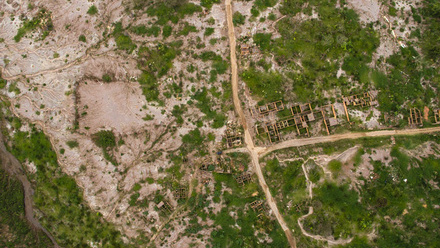Environmental impact of hidden mining roads uncovered
Satellite images analysed using machine-learning models are finding unmapped roads in wilderness areas from mining, logging and land clearing.

The automated approach to large-scale road mapping is part of a study from James Cook University, Australia.
Co-author Professor William F. Laurance notes that there is an unprecedented wave of roadbuilding for these economic activities – with 25mln km of new paved roads expected by the mid-century, and 90% of all road construction occurring in developing nations, including tropical and subtropical regions of exceptional biodiversity.
He notes that many of these roads are unmapped and studies are finding up to 13 times more road length than on national or road databases. 'In developing nations, we commonly find three to 10 times more ghost roads,' notes Laurance.
Three machine-learning models have been trained to automatically map road features from high-resolution satellite imagery, covering rural, generally remote and often forested areas of equatorial Asia-Pacific, including Indonesia, Malaysia and Papua New Guinea. The total area is unspecified.
The paper, Mapping remote roads using artificial intelligence and satellite imagery, in the journal remote sensing, describes how they broke down 200 screenshots of high-resolution, true-colour satellite images into 8,904 image tiles and randomly selected 80% for model training, 10% for validation and 10% for final testing.
Senior Lecturer Tao (Kevin) Huang explains that the models are based on convolutional neural networks. Training involved adjusting parameters to minimise the discrepancy between predicted maps and the reference dataset. 'It is important to note that the accuracy of the models relies heavily on human expertise to provide precise labels for road and non-road features,' he says.
The researchers conclude that unmapped road construction almost always precedes forest destruction from subsequent activity, whether that be logging or mining.
'Mining is a massive driver of road expansion, as it provides a key economic impetus for roading activities that in turn lead to serious environmental harm,' reflects Laurance. 'This is happening apace across the tropics – from Africa to the Asia-Pacific and the Amazon and beyond.'
Their 2021 study in Conservation Science and Practice – Rerouting a major Indonesian mining road to spare nature and reduce development costs – examined a planned 88km road for transporting coal in Harapan Indonesia in Sumatra, Indonesia, the island’s largest surviving tract of lowland forest.
They found three proposed routes would lead to 3000-4,300ha of additional forest loss from human encroachment, plus another 424ha from the construction.
The team’s proposed alternative routes would cause 3,321ha less forest destruction with markedly lower construction costs.







